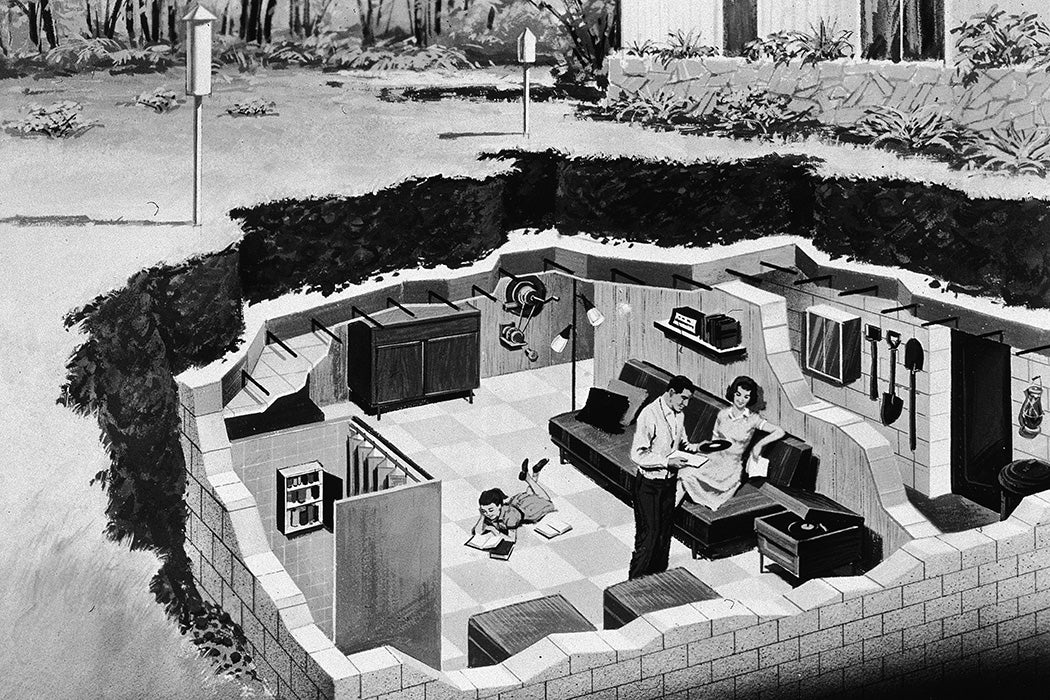In 1950, President Truman appointed Millard Caldwell, Jr., as the first head of the Federal Civil Defense Administration (FCDA). The former Governor of Florida, Caldwell was a vocal segregationist who, along with many local civil defense authorities, fully intended to maintain segregation with “whites only” bomb-shelters and plans for a post-apocalyptic preservation of Jim Crow racism. Even while he held his federal position, Caldwell refused to respect NAACP officials by addressing them by their professional titles.
“While the majority of citizens in the United States were learning to ‘duck and cover,’ the National Association of Colored People (NAACP) was involved in an internal debate about whether African Americans, given the realities of Jim Crow in the South and the treatment of African Americans as second class citizens, should even take part in civil defense activities.”
As scholar Andrew D. Grossman shows, the NAACP protested Caldwell’s appointment, but to no avail. In picking Caldwell, Truman wanted to win support from “Dixiecrats” who had given four Southern States to Strom Thurmond in the 1948 election. Truman also wanted to calm anti-big government voices with his appointment of a “states’ rights” advocate who could conceivably be in charge of the country after a nuclear war.
The NAACP’s “Oust Caldwell” campaign was no match for politics, in which Black Americans had little to no say because of the denial of voting rights.
“Segregationist liberalism” is what Grossman calls the domestic context of the Cold War. Federal emergency planning and national security policies played by the rules of the American system of legal and customary racism. Since Plessy v. Ferguson (1896), liberalism and racial segregation had been seen by many as compatible, and FCDA planners worked “as if there was nothing wrong with protecting a political order based on a two-tiered citizenship.”
The main goal of the federal civil defense program, writes Grossman, was to “promote an illusion of protection to a select but important political constituency: mostly white, middle-class, suburban America.” Beyond these favored, and heavily subsidized, citizens, large portions of the American population were essentially written off, especially in cities. Meanwhile, civil defense planners assumed that second-class status for Blacks would be translated to what remained of a post-nuclear America.
Grossman directly challenges the notion that the Cold War itself forced the U.S. to be progressive on race issues, and argues instead that the focus on national security “essentially limited what was possible with respect to civil rights and, more broadly, American liberalism.”
After all, in the conformist, militarized Cold War political culture, protest of any sort was viewed as an internal security threat. The repressions of McCarthyism, fostered by Truman’s loyalty program, echoed into the 1960s, when people working on expanding voting rights were routinely labeled as communists by both segregationists and the FBI.
Weekly Newsletter
With “Oust Caldwell” ineffective, the NAACP debated boycotting civil defense drills. The cudgel of patriotism kept the organization from advocating this, but people at the grassroots took up the passive resistance of non-participation anyway. For instance, civil defense programs in neighborhoods throughout New York City were quite successful, except in Harlem.
Grossman includes a telling detail from Detroit in 1952. The city’s all-white auxiliary firefighters, in charge of civil defense preparation, pleaded for participation from local Blacks in civil defense drills: “[I]s an investment in the safety of everything we all value asking too much?” The answer seemed to be yes when that “everything we all value” included an acceptance of segregated fire-fighters in a separate and decidedly unequal society.
Support JSTOR Daily! Join our new membership program on Patreon today.







